Celestial navigation aids
Navigating the night sky is not easy when you’re starting out. But you can use these formations to make tracks through the jungle of stars!
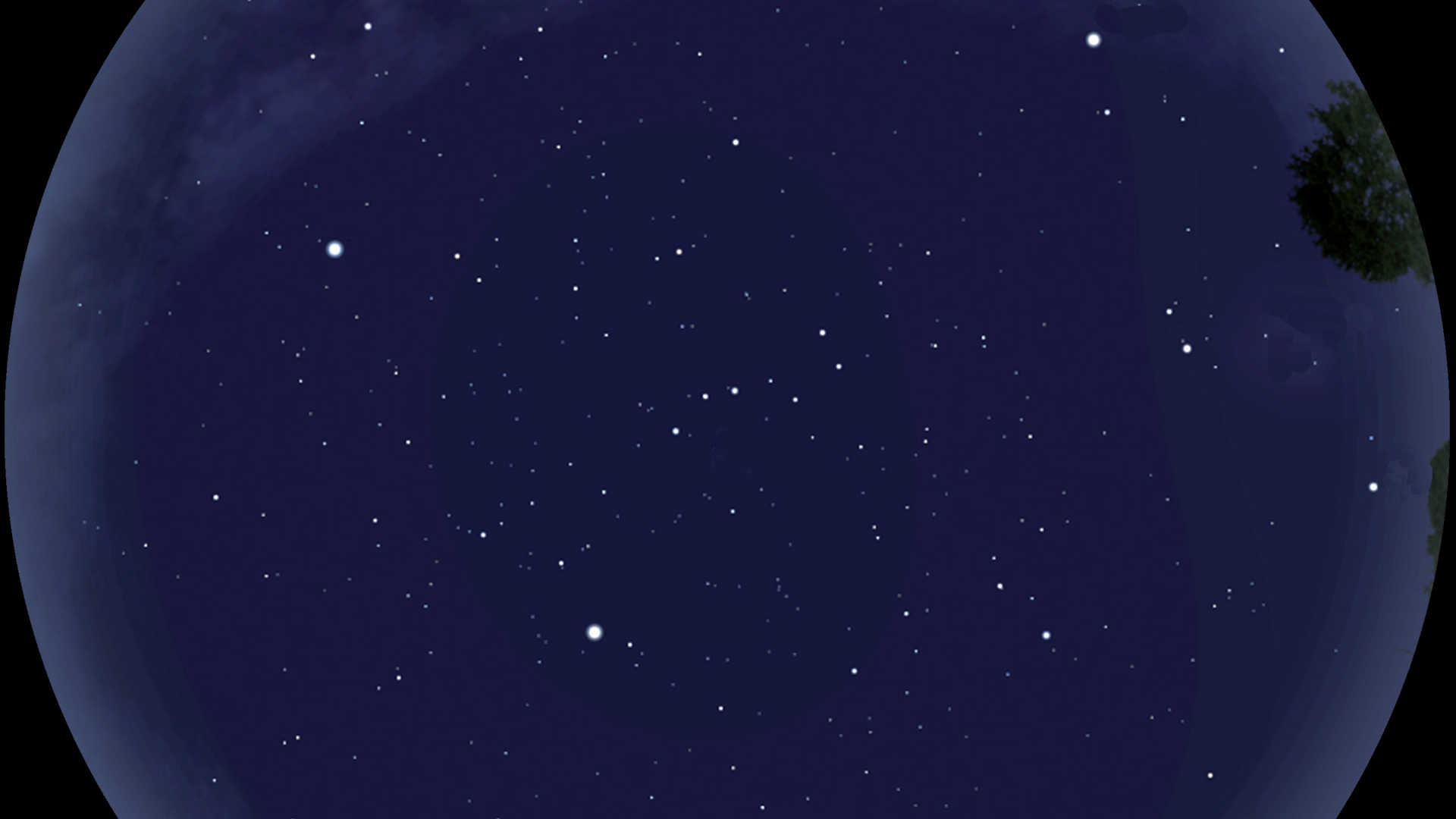 Stellarium
StellariumHow even beginners can find their way around the night sky
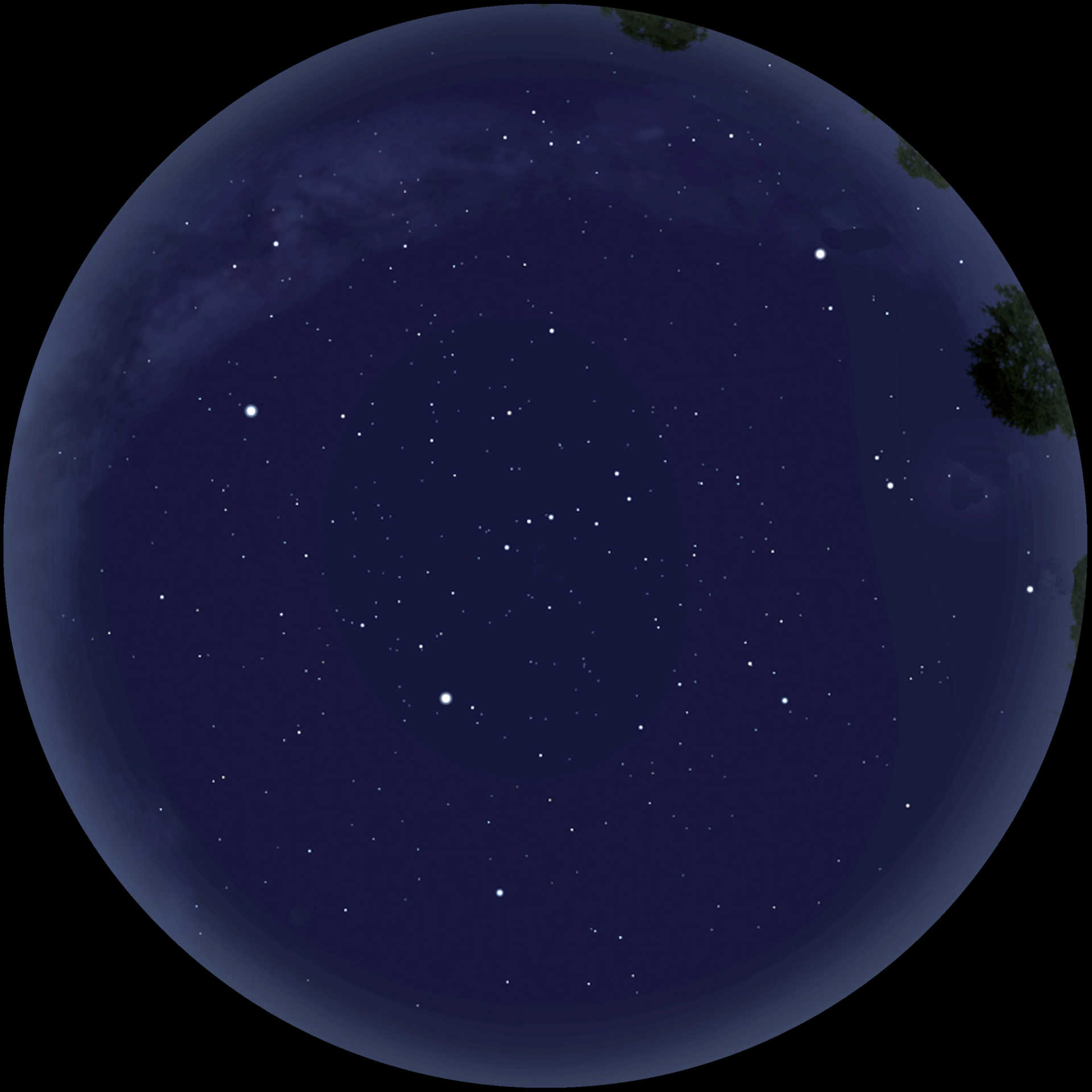 The spring night sky as a 360° panorama. Orientation is difficult without proper navigation. Stellarium
The spring night sky as a 360° panorama. Orientation is difficult without proper navigation. StellariumFor the untrained star friend, it is not easy to navigate the night sky. In a dark location, so many stars may be visible that the constellations can sometimes be hard to identify. On the other hand, from a bright observation site near the city only a small number of stars will be visible. Now it's time to focus on the essentials and make use of the sky’s own GPS.
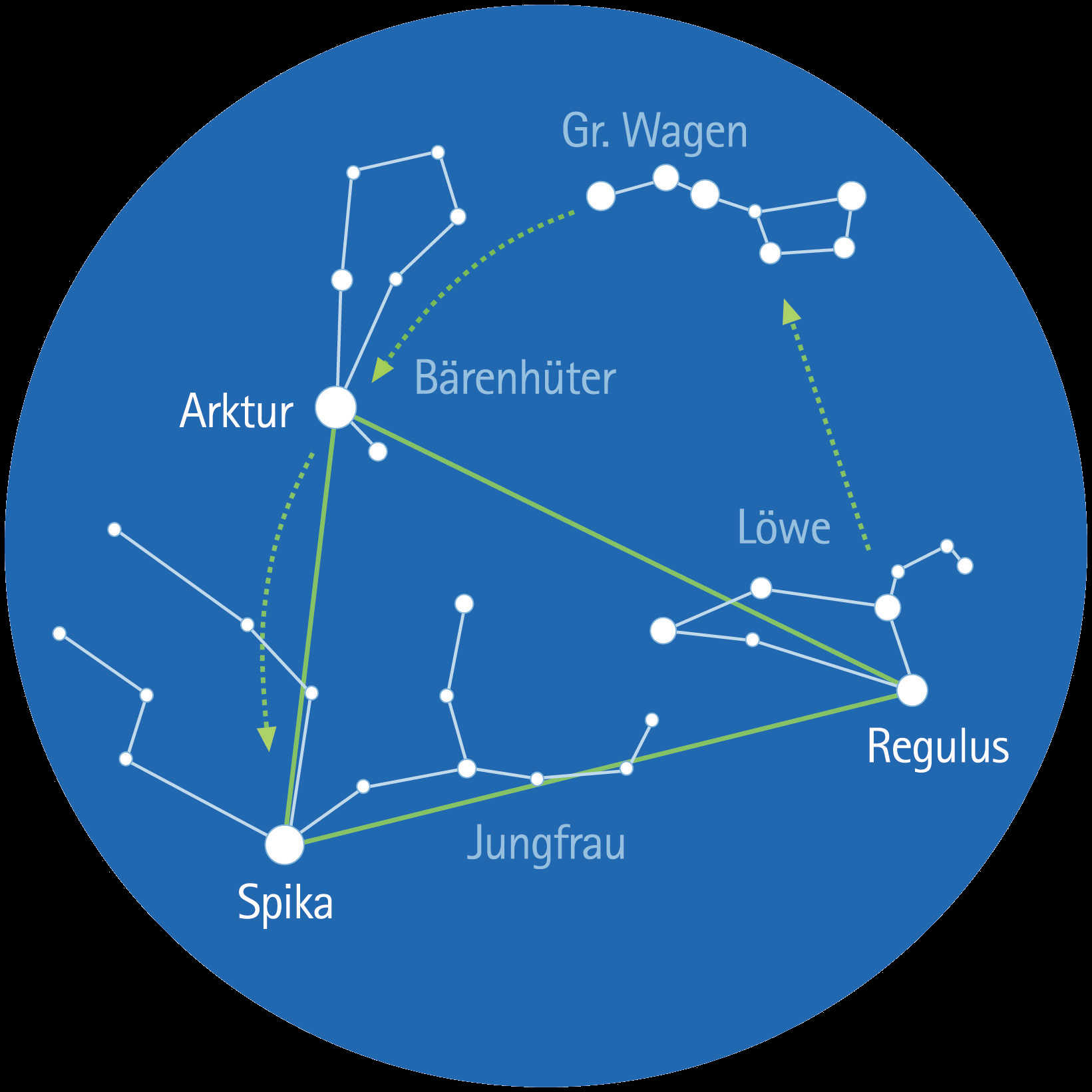 The Spring Triangle is a useful orientation aid in the spring. L. Spix
The Spring Triangle is a useful orientation aid in the spring. L. SpixThe starting point in spring is the Big Dipper, a well-known constellation that just about everyone can find. In spring, this constellation can be seen in the north almost at the zenith. If you extend the arc of the wagon handle towards the horizon, after a distance of around double the handle’s length, you will find the brightest star in this section of the sky: the reddish Arcturus in the constellation Boötes. If you continue to follow the same curved path, after about the same distance again you will find another bright star in Virgo: this is Spica. You’ve already found two corners of the so-called Spring Triangle. Now the only one missing is Regulus in Leo, which forms the large triangle with the other two stars. You can locate this by extending the two stars at the front of the Big Dipper towards the horizon.
Triangle and square
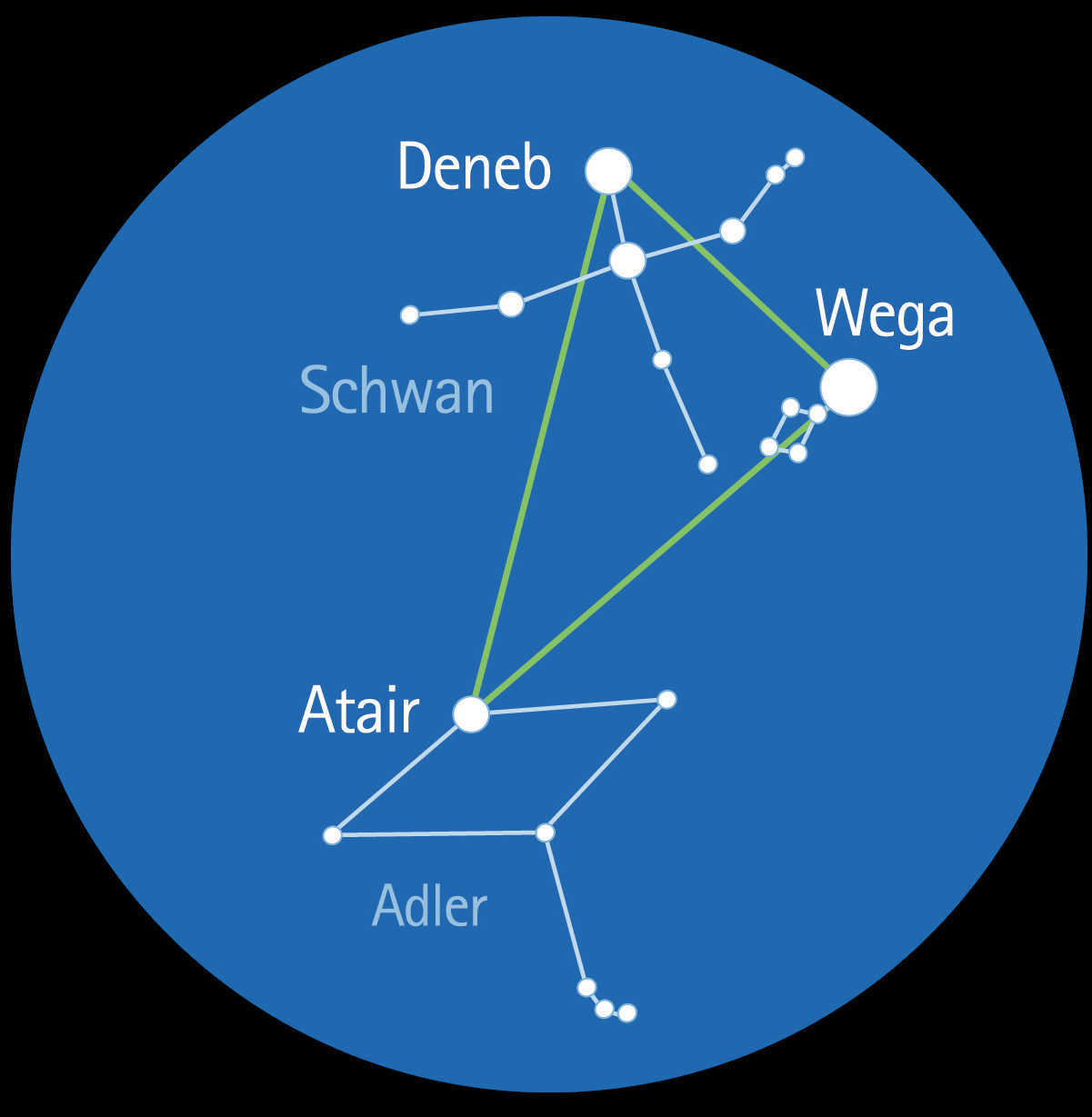 The Summer Triangle stands out in the sky in summertime. L. Spix
The Summer Triangle stands out in the sky in summertime. L. SpixIn summer, bright Vega is an ideal starting point for navigation. Now it is practically at the zenith in the late evening. With the slightly fainter gleaming Deneb – the tail of Cygnus – and Altair in Aquila, these three stars form the great Summer Triangle. Follow Cygnus’ direction of flight along the Milky Way, until deep in the south you come across bright red Antares in Scorpio.
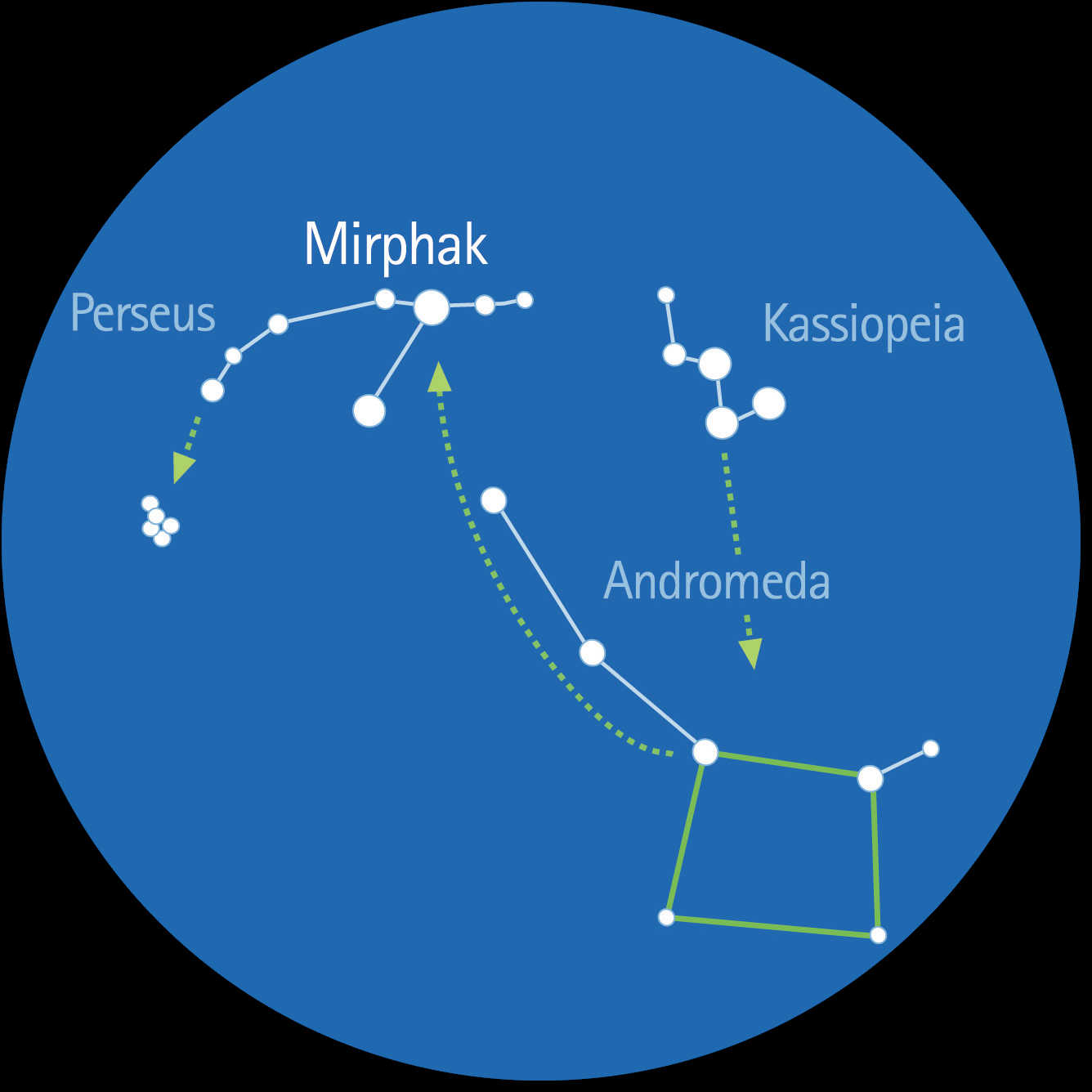 The Great Square is made up of the brightest stars in the constellation Pegasus. L. Spix
The Great Square is made up of the brightest stars in the constellation Pegasus. L. SpixThe zenith of the autumn sky is dominated by the constellation of Cassiopeia with its distinctive W-shape. Autumn also has a large asterism to help with orientation - the Great Square - which consists of the brightest stars in the constellation Pegasus. From there, a striking chain of three stars, almost equally bright, points to Alpha Persei, the brightest star in Perseus. Here the constellation is divided into two legs. If you follow the eastern one, you will soon encounter the Pleiades open cluster.
Hexagon in winter
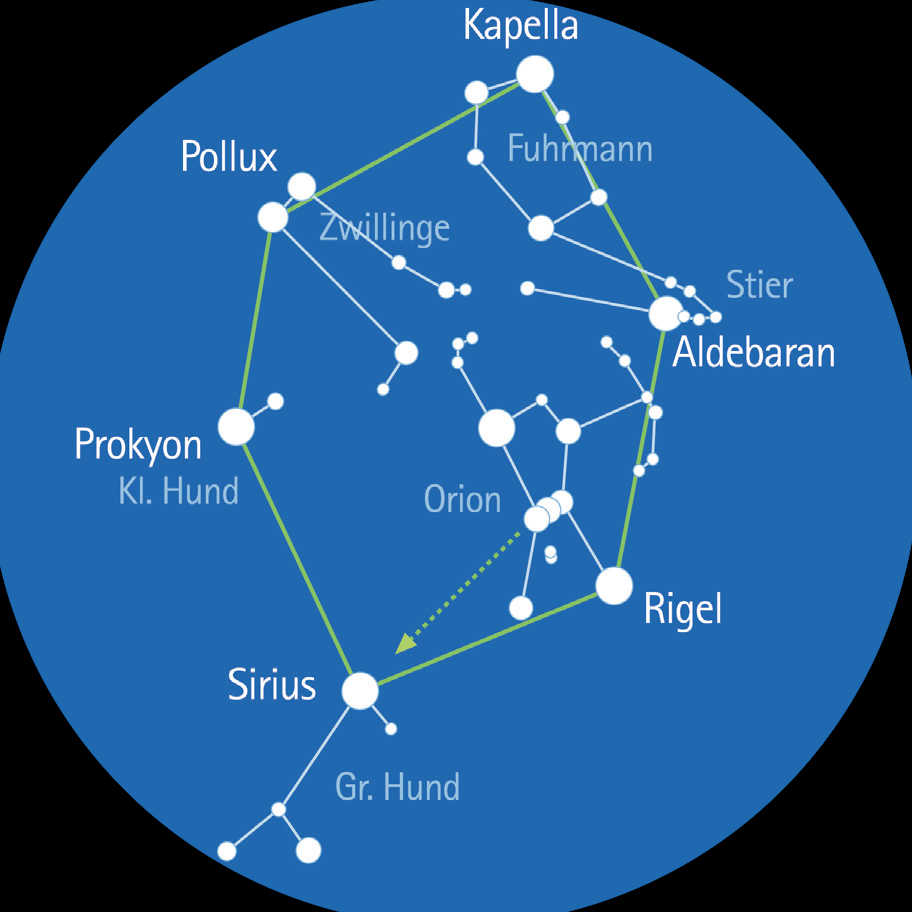 The Winter Hexagon is the largest asterism in the northern sky. L. Spix
The Winter Hexagon is the largest asterism in the northern sky. L. SpixOrion is the prominent constellation in winter – a large rectangle of stars divided by a line of three stars, known as Orion’s Belt, in the middle. If you extend the line of the belt, you can’t miss Sirius, the brightest star in the sky. This forms the lower left corner of the Winter Hexagon, which is completed by Procyon in Canis Minor, Pollux in Gemini, Capella in Auriga, Aldebaran in Taurus and Rigel in Orion.
Author: Lambert Spix / Licence: Oculum Verlag GmbH
